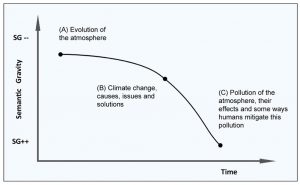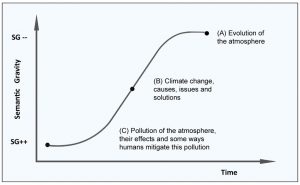Dr. Robbie Campbell, XP School, XP Trust, Doncaster
Introduction
Humans are hard-wired to remember stories. The use of stories or narratives in science to engage pupils is nothing new. I remember being told the stories of Fitz Haber, Edward Jenner and Marie Curie during my secondary school science lessons. The purpose of such stories was to bring the content alive and to help us, as students, to engage with what we were learning They shined a light on the people who developed the theories and concepts we studied. Often though, these narratives, while bringing interest, were tangential to the process of building knowledge and understanding concepts. In this piece, I suggest that narratives can enable teachers to go beyond engagement with students and can help students to build conceptual understanding by creating a connection which runs across a number of lessons and provides a sequence for learning. Thus, curriculum narratives can be considered a curriculum design feature, and can enable teachers to consider how individual pieces of knowledge connect and relate to the subject as a whole.
Curriculum narratives
There is evidence to suggest that narratives support students’ understanding and development of schema (Schank & Abelson, 1995; Willingham, 2009). Research into curriculum narratives is a growing area (Makar et al., 2018) and discussion of curriculum narratives is becoming increasingly popular in practitioner magazines (Beauchamp, 2022) and on popular education blogs (Counsell, 2018; Raichura, 2020). As part of my doctoral study, I researched how teachers design the curriculum, paying particular attention to sequencing of science concepts (Campbell, 2024). This article considers how the use of curriculum narratives as a design feature can affect the sequence of learning using an illustrative example of a science unit on ‘chemistry of the atmosphere’ which was given by a teacher in the study. The curriculum narrative change described below flips the traditional sequence of more abstract unfamiliar content at the start of the unit and more familiar content at the end. In doing so, the teacher starts the curriculum with the most concrete knowledge and leads students towards the more abstract knowledge.
Traditionally, science units are sequenced such that more abstract content is placed at the start of the unit, building students’ understanding to enable them to comprehend familiar concepts. For example, a teacher might start by teaching students about cells and organelles, before moving on to discuss organs and organ systems. A teacher in my doctoral study gave the example of the key stage 3 ‘chemistry of the atmosphere’ unit to illustrate how use of narratives can affect sequencing of knowledge. The sequence below represents a traditional narrative, and is reflective of how many science teachers would approach the unit:
- the evolution of the atmosphere from the earth’s inception until the modern day
- climate change, causes, issues and solutions
- pollution of the atmosphere, its effects and some ways humans mitigate this pollution.
The teacher described how, by sequencing content in this way, science is taught in a way which makes sense to an expert scientist: ‘This topic has been traditionally taught in this order [shown above], as it logically follows from the perspective of a science specialist to start from the beginning of time…then moves on to human activities which are more recent’. This traditional sequence starts from the more abstract concepts and ends with the most concrete and relatable concepts to students.
This sequence can be mapped using semantics (Figure 1), a tool from Legitimation Code Theory developed by Karl Maton (2014). SG- – represents abstract concepts which connect weakly to context, while SG++ represents more concrete concepts which connect strongly to context.
Instead of adopting the traditional narrative described above, the teacher suggested: ‘Why not start from a place of familiarity? Beginning with what the modern atmosphere is composed…and then human effects on the climate and then going back in time to how we have achieved the current modern day atmospheric composition…’.
By flipping the traditional sequencing of the unit, the more concrete and relatable ideas are placed at the start of the unit, followed by more complex and abstract ideas. This allowed students to build abstract knowledge from a place where they had more background knowledge to work with. This is shown in Figure 2 where the sequence of learning begins with a stronger connection to context (SG++) and ends with the most abstract concepts (SG- -).
Figure 2. Semantic wave of a ‘flipped’ science unit
Conclusion
Curriculum narratives are powerful curriculum design features which can not only engage students but flip the sequencing of ideas so that students can integrate them more effectively into their schema. For the potential of curriculum narratives to be realised, teachers need to consider how abstract concepts develop in their subject. Well-considered narratives have the potential not only to support students’ learning, but also to support teachers’ professional development by engaging them in the important work of curriculum thinking. For more on using narratives in science, the Institute of Physics (IOP) offers storylines which support teachers to reconsider the more traditional approaches to sequencing science units (IOP, 2023).
References
Beauchamp, A. (2022). Living and learning inside the story: How storytelling can shape curriculum design. Impact.
Campbell, R. (2024). How teachers design the active science curriculum. (Unpublished doctoral disseration). Sheffield Hallam University.
Counsell, C. (2018). Taking curriculum seriously. Impact.
Makar, K., Ali, M., & Fry, K. (2018). Narrative and inquiry as a basis for a design framework to reconnect mathematics curriculum with students. International Journal of Educational Research, 92, 188–198.
Maton, K. (2014). Knowledge and Knowers: Towards a realist sociology of education (1st ed.). Routledge. https://doi.org/10.4324/9780203885734
Institute of Physics [IOP]. (2023). https://spark.iop.org/
Raichura, P. (2020, August 4). Curricular narrative. Bunsen Blue. https://bunsenblue.wordpress.com/2020/08/04/curricular-narrative/
Schank, R., & Abelson, R. (1995). Knowledge and memory: The real story. In R. Wyer (Ed.). Knowledge and memory: The real story. Advances in social cognition (Vol. 8, pp. 1–86). Lawrence Erlbaum Associates.
Willingham, D. (2009). Why don’t students like school? A cognitive scientist answers questions about how the mind works and what it means for the classroom. Jossey-Bass/Wiley.


